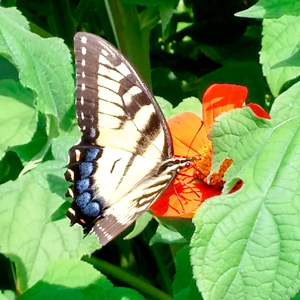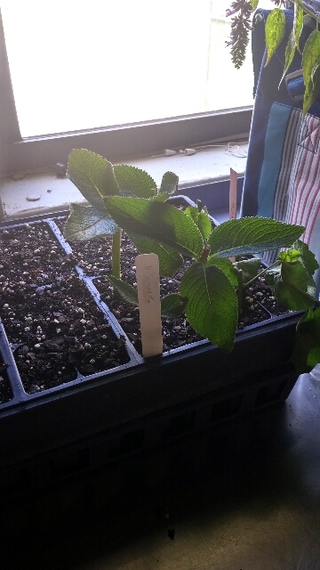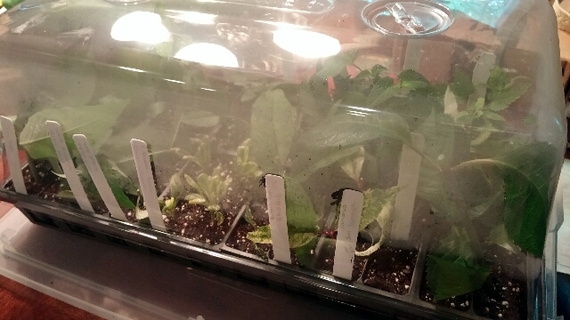 I'd been wandering around the garden for the past two hours. Hot, thirsty, and running out of time, I was starting to feel like the last place contestant at a scavenger hunt. It was my very first attempt at propagating plants from cuttings and I had been given a small window of time to take my pick of the over seven thousand plants at the JC Raulston Arboretum at NC State to propagate and grow in my own back yard paradise.
I'd been wandering around the garden for the past two hours. Hot, thirsty, and running out of time, I was starting to feel like the last place contestant at a scavenger hunt. It was my very first attempt at propagating plants from cuttings and I had been given a small window of time to take my pick of the over seven thousand plants at the JC Raulston Arboretum at NC State to propagate and grow in my own back yard paradise.
Normally taking cuttings from plants at the arboretum would get you turned in to campus police and kicked out of NC State's little patch of Eden. But not me, not right then. I was taking a propagation workshop, where I learned to take cuttings from plants and grow them into new plants.
Just when I was despairing of ever finding the plants I was looking for, our instructor Chris Glenn appeared to save me. He must have recognized my look of desperation because as soon as I choked out the words "butterfly bush" we were off across the garden together.
"This salvia is amazing" Chris said, snipping off some of the Hot Lips salvia for me. And as I bagged and labeled the cutting we were off to the Blue Chip butterfly bush. Chris knew that I was creating a backyard butterfly garden and in the next ten minutes he loaded me up with pollinating plants that I may have never found on my own.
The workshop consisted of three parts. We spent several hours in the classroom learning how propagation worked. After taking the cuttings out in the arboretum, we went to the greenhouses and worked our plant magic.
In theory, propagating plants is a simple process that has a lot to do with timing, environment and even luck. I quickly learned that there is a nice dose of skill involved as well.
There are a lot of elements that must come together in order for a plant cutting to root well. First, you have to pick the right kind of plant. We took softwood cuttings from plants such as roses and hibiscus. Second, you have to take the cutting from the right spot on the plant. This year's growth, but hardened off. From the North side. And it might just have something to do with the way you hold your mouth when you take the snip... or that part could just be me.
With Chris' expert guidance our class marched off to the greenhouse to process our cuttings and create two flats. One flat would stay safely in the controlled environment of the arboretum greenhouse. The other would take its chances going home with me. In roughly six weeks (if all went well) I would have rooted plants for my backyard butterfly garden.
This is where skill and experience make all the difference. When processing a cutting for propagation, Chis showed us several examples in the classroom. "You need a minimum of two nodes for each cutting" he said, holding up an example plant. "One for under the dirt, one for above. Strip the leaves off of the lower node, dip into the Hormone powder, and stick into the cell."
Even after seeing multiple examples of what to do and not to do in the classroom, it wasn't quite so easy when looking at the varying plant cuttings I'd brought back to the greenhouse. The gardenia (while absolutely beautiful) was particularly troublesome. With a bit of help, I found a good spot and processed my cutting. Other cuttings I took include Japanese Beauty Berry, Potter's Purple Butterfly Bush, Gene's Purple Salvia, and various roses, hibiscus, a gardenia and some ground covers.
An hour and two plant flats later, I was on my way home with my own little plant factory in the passenger seat. How successful was my first attempt at plant propagation? Patience, my dear fellow gardener. Check back with me in about six weeks and we'll find out together.

